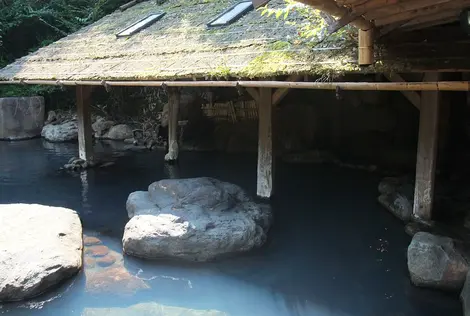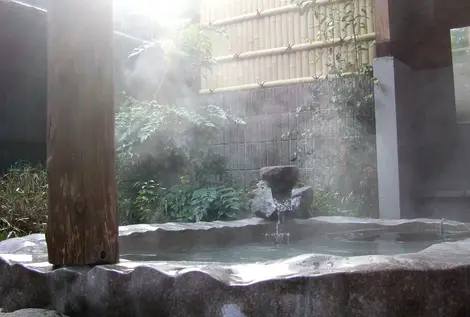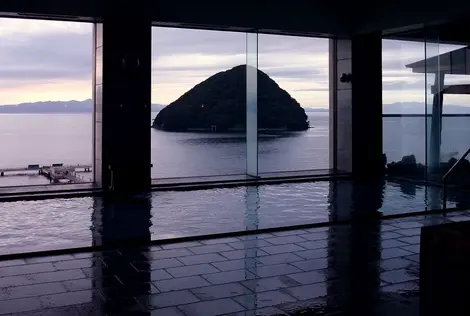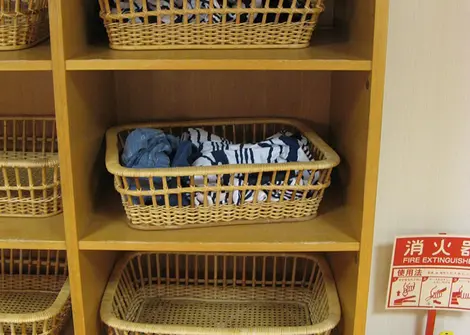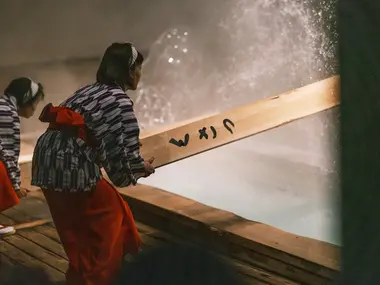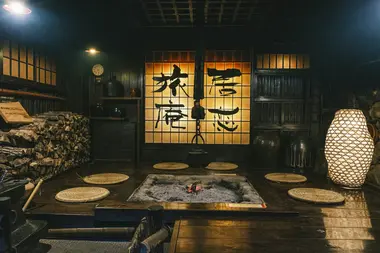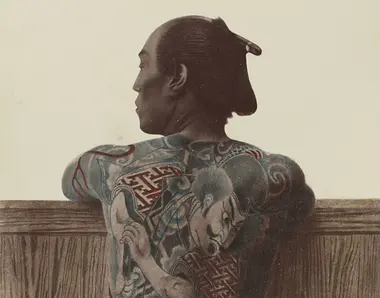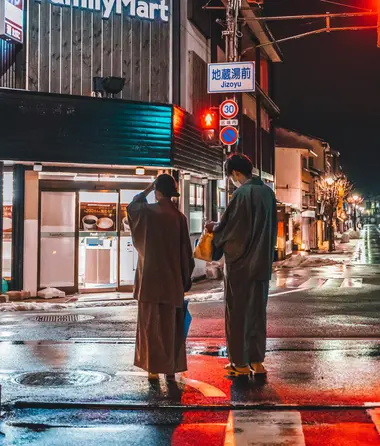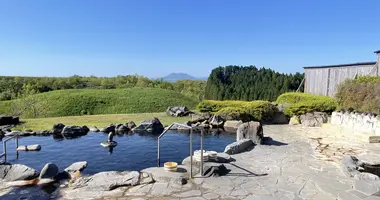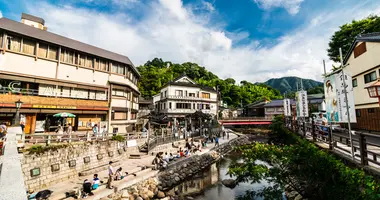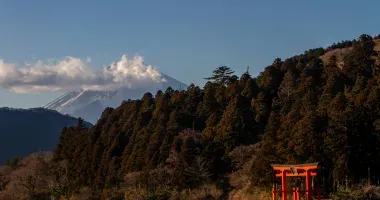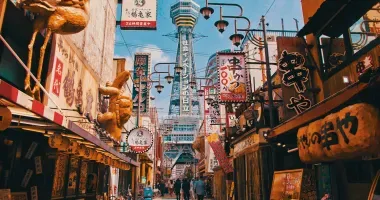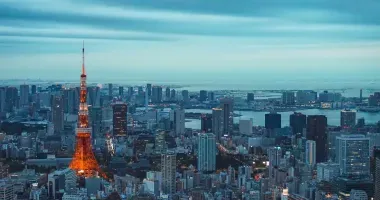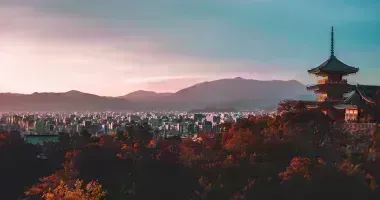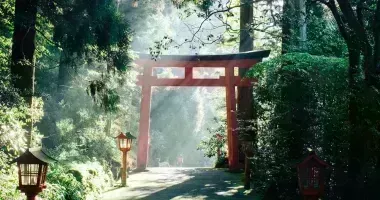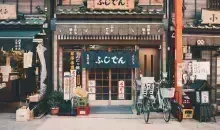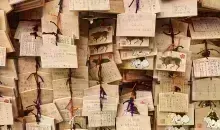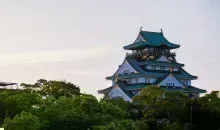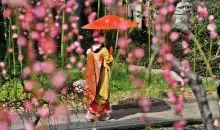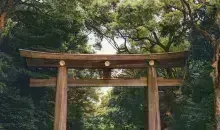All you need to know about onsen in Japan: our guide to making an onsen
- Published on : 16/02/2024
- by : Marion.E
- Youtube
Onsen are an unmissable experience combining relaxation and tradition. Between well-being, rituals and an infinite choice of springs, discover our guide to this unique moment in Japan.
1. The different types of onsen
There are several types of onsen, each with its own particular characteristics depending on the region and the minerals present in the water.
- Open-air onsen (rotenburo): These outdoor baths let you enjoy the scenery while relaxing. They are often located in natural settings such as mountains or near the sea, offering breathtaking views.
- Indoor onsen: These baths are located inside buildings, usually with stone or wooden walls, offering a more intimate atmosphere.
- Private onsen (kashikiri onsen): For a more personal experience, you can book a private onsen. These baths are ideal for couples or families, allowing you to enjoy the bath without sharing the space with others.
- Therapeutic onsen: Some onsen are renowned for their curative properties, thanks to the composition of the water, which is rich in minerals such as sulfur and iron. These baths are used to relieve a variety of ailments, such as muscular pain and fatigue.
Japanese onsen are distinguished by their varied mineral compositions. These minerals offer specific properties, influencing the color, odor and therapeutic benefits of the waters. Here's an overview of the most common types of onsen:
- Sodium chloride onsen : Similar to seawater, these waters help retain body heat, relieve muscle pain and promote healing of cuts and burns.
- Sulfur onsen : These waters have a characteristic milky odor and are reputed to soothe skin ailments and joint and muscle pain.
- Iron onsen: Identifiable by their reddish or brownish hue, these waters are often recommended to combat anemia and improve blood circulation.
- Carbonated onsen: Naturally sparkling, these skin-friendly waters are ideal for treating certain skin conditions and improving blood circulation.
- Radium onsen: Containing traces of radioactive elements, these rare sources are associated with benefits for reducing blood pressure, relieving gout and improving circulatory problems.
Sento and onsen should not be confused:
Sento: public baths traditionally used before the advent of individual bathrooms.
Onsen: natural thermal springs, whose water comes from volcanic springs.
2. Rules and codes to follow in an onsen :
Onsen follow strict codes to ensure a pleasant and respectful experience for all users. Here are a few essential rules:
- Washing before bathing: Before plunging into an onsen, it's crucial to wash thoroughly. Use shower stations equipped with stools and personal showers to clean yourself with soap and hot water.
- Avoid plunging into the water too suddenly: Onsen water is hot, and rapid immersion can be difficult. Enter gradually to allow your body to get used to the temperature.
- Don't submerge your head underwater: In an onsen, it's important to keep your hair out of the water. If you have long hair, tie it up to prevent it from touching the water.
- Don't talk loudly: Respect for quiet is paramount in an onsen. Keep quiet and calm so as not to disturb others.
- No bathing suit It is possible to keep a small cotton towel in the onsen, called a tenugui. No towel should be in contact with the bath water. This keeps the water particularly clean.
- Rinse off : Rinsing is recommended for certain types of mineral composition. A quick wash will get rid of the acid, hydrogen sulfide and other minerals present in some waters, especially if you have sensitive skin.
3. Onsen and tattoos
Tattoos in Japan are often viewed in a negative light, not least because of their association with the yakuza, the Japanese mafia. As a result, many onsen prohibit tattooed people from entering. However, this situation is gradually changing.
- Onsen that accept tattoos: More and more onsen, especially in big cities like Tokyo and Kyoto, are beginning to relax this rule. Some establishments even have specific policies allowing tattooed guests access to designated areas.
- Solutions for the tattooed: If you're tattooed and want to enjoy an onsen, it's possible to find establishments that allow tattoos or offer tattoo covers to wear for the occasion. It is therefore essential to check onsen policies in advance.
4. Mixed onsen
Mixed onsen (or"konyoku onsen") are thermal baths where men and women bathe together. Although they are relatively rare, they do exist in certain regions, particularly in rural areas or small traditional inns.
- Special clothing for mixed onsen: In mixed-sex onsen, some establishments allow visitors to wear special clothing, such as bathing suits or yukatas, to ensure modesty and respect for other bathers.
- Rules of conduct: In these onsens, the rules on privacy and behavior are even stricter, and it's essential to be particularly vigilant about how you interact with other visitors.
In other onsens, men's and women's baths are separate. The men's bath is indicated by the character 男 (otoko, man) on a blue curtain; the women's by the character 女 (onna, woman) on a red curtain. Beware of getting it wrong!
5. Where to enjoy an onsen?
Japan is full of wonderful places to enjoy onsen. Here are a few popular destinations:
- Hakone: Located just an hour from Tokyo, Hakone is famous for its onsen, with magnificent views of Mount Fuji. It's one of the most popular destinations for a spa getaway.
- A 40-minute train ride from Tokyo.
1. Tenzan Onsen
2. Hakone Yuryo
3. Hakone Kowakien Yunessun - Beppu: On the island of Kyushu, Beppu is one of Japan's largest spas, with dozens of public and private onsen to discover.
- Accessible in 2 hours by train from Fukuoka (Hakata). - Kusatsu Onsen : This spa village in Gunma prefecture is renowned for the quality of its waters and its authentic atmosphere. It's an ideal place for total immersion in onsen culture.
- Accessible in 3 hours by train from Tokyo. - Ibusuki: On the island of Kyushu, Ibusuki is famous for its hot sand baths, where you are buried under heated sand to enjoy the therapeutic benefits.
- Accessible in 50 minutes by train from Kagoshima-Chuo. - Kinosaki Onsen: Known for its seven renowned public baths, Kinosaki offers a number of onsen where tattooed people can bathe without any problem.
- Accessible by train in 2.5 hours from Kyoto and Osaka, and by bus in 3 hours from Osaka.
Enjoy the onsen with our excursions !
Other rules of etiquette or tips to know!
- It's strictly forbidden to take photos. If you want to take some nice souvenir shots, reserve a private onsen for that purpose!
- Don't drink alcohol: Excessive heat can lead to overheating and discomfort.
- Take off your jewelry : Certain minerals can damage it
- Take care if you have skin problems: It's advisable not to bathe in onsen and thermal baths if you have skin problems.
- Take change: As in many places in Japan, cards are not accepted, so remember to give change, which can also be used at the lockers.
- Pregnancy: we strongly advise against going to onsen, where the water temperature often exceeds 40°C, which is very bad for the heart and circulation. Sentos, on the other hand, offer a wider choice of baths. Avoid, however, baths that are too long or over 37°C.





